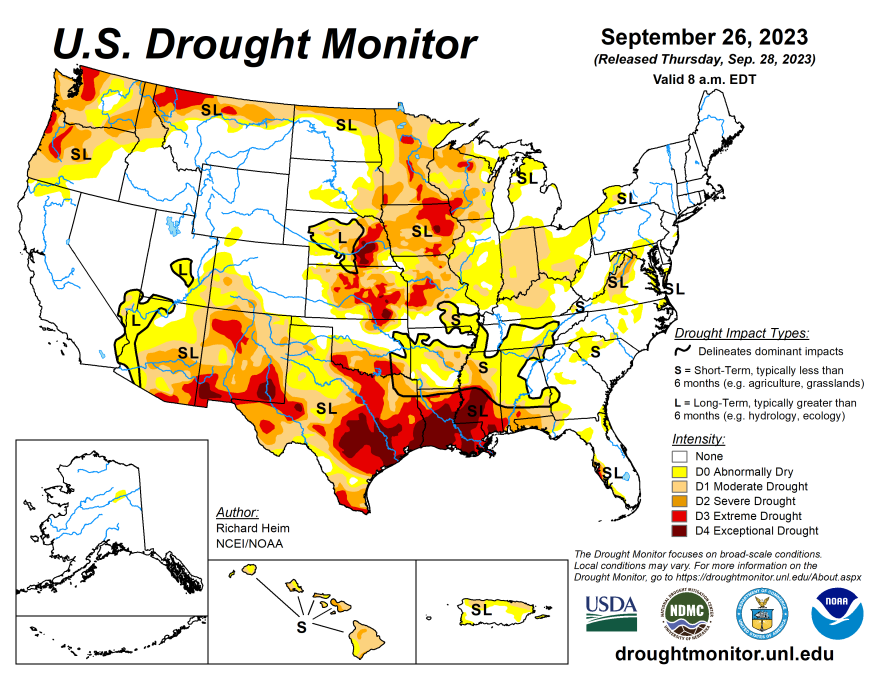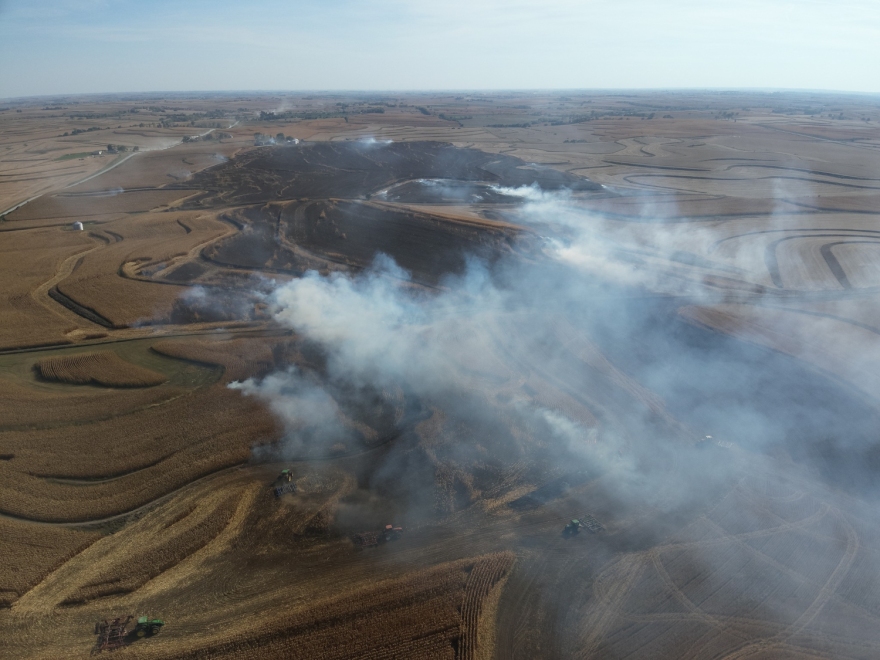A large fire in a farm field recently brought together firefighters and a dozen farmers to fight the blaze near Emerson in far southwest Iowa.
Brian Hamman, the emergency management director for nearby Montgomery County, estimates the fire burned up to 300 acres.
“It’s so dry, it just takes high wind and a spark, and off it goes,” Hamman said.
Drought is fueling concerns over the risk of wildfires throughout the Midwest. Dennis Todey, director of the U.S. Department of Agriculture’s Midwest Climate Hub, said while grass fires are not uncommon for the Plains states, the fire risk is following on the heels of drought.
“Minnesota, Iowa, Missouri, Wisconsin, and parts of Illinois are usually wet enough that there is usually just an infield risk,” he said. “However, there is more of a problem due to ongoing drought conditions and the severity of dryness.”
Todey, who is based in Ames, Iowa, said there are always issues when farmers head into the fields for harvest, but now there is a real risk of fires spreading.
“If something does get started and is not dealt with quickly, you know, it could be a potential problem. During windy conditions, fires can move very quickly on dry vegetation,” he said.
The National Weather Service, state climatologists and extension service staff members are meeting regularly, according to Todey. He said they’re trying to get the message out to farmers and the general public, about the risks.
“... to be aware, to react quickly and be ready to deal with it if something does happen,” he said.

In Iowa, 16 of the state’s 99 counties have bans on burning. To try and prevent any problems while bringing in crops, Iowa State Fire Marshal Dan Wood said farmers need to keep their tractors and combines maintained and as clean as possible.
“Sometimes field shrapnel will get into places where it shouldn’t be, and that causes fire.”
He also cautions residents to be extra careful when building fires outdoors and have a fire extinguisher or water hose nearby.
Duane Friend, a climate specialist with the University of Illinois Extension, also stresses the importance of farmers keeping chaff and dust from equipment and checking daily for oil leaks. He adds people should not build fires on windy days.
He said he expects the fire risk to remain high late into the fall, due to continuing dry conditions and the long-term outlook for above-average temperatures.
“Hopefully, high winds will not be a player in this, which would increase the risk greatly.”
Todey agrees the fire risk will likely continue into November unless areas that are dry see substantial precipitation.
“We would need some significant rain. We're still warm enough that grasses could still kind of green up a little bit, and that would be helpful,” he said. “Wetter conditions around certainly would be helpful.”
This story was produced in partnership with Harvest Public Media, a collaboration of public media newsrooms in the Midwest. It reports on food systems, agriculture and rural issues.

